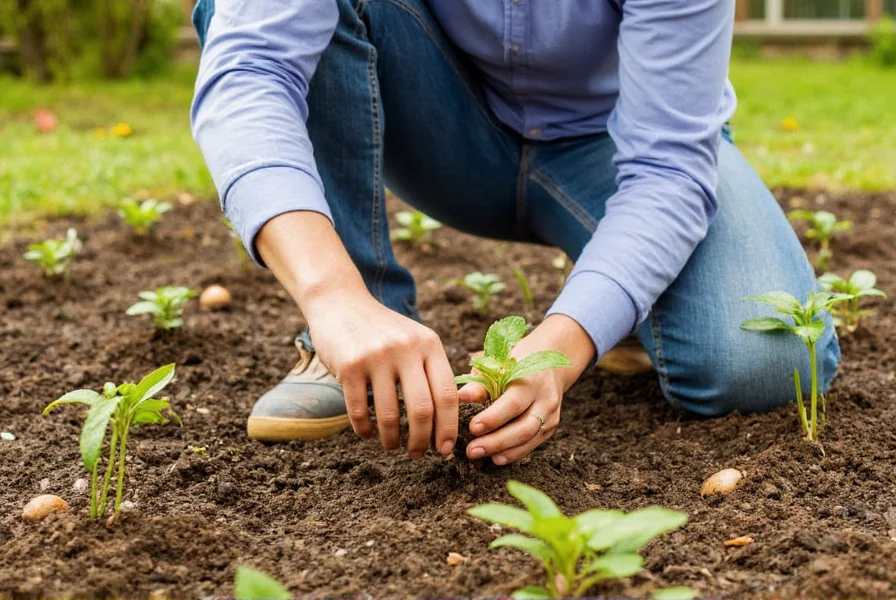Many residents and gardening enthusiasts in Palm Coast wonder about the viability of growing wild ginger in their yards. While the term "wild ginger" commonly refers to Asarum canadense—a plant native to deciduous forests of eastern North America—this specific species isn't suited to Florida's subtropical environment. Understanding the distinction between true wild ginger and other ginger varieties that thrive in warmer climates is essential for successful gardening in the Palm Coast area.
What Exactly Is Wild Ginger?
True wild ginger (Asarum canadense) belongs to the Aristolochiaceae family and features heart-shaped leaves and small, maroon flowers that grow close to the ground. This perennial plant spreads through rhizomes and prefers shady, moist woodland environments with rich, well-draining soil. It's important to note that while it's called "ginger," it's not related to culinary ginger (Zingiber officinale) and contains aristolochic acid, which makes it unsafe for consumption.
Palm Coast's Climate and Growing Conditions
Palm Coast sits in USDA hardiness zone 9a, with average minimum temperatures ranging from 20-25°F (-6.7 to -3.9°C). The area experiences hot, humid summers and mild winters, with significant rainfall throughout the year. This climate differs dramatically from the cooler temperate forests where true wild ginger naturally grows.
| Climate Factor | Palm Coast Conditions | True Wild Ginger Requirements |
|---|---|---|
| USDA Hardiness Zone | 9a | 4-8 |
| Soil Type | Sandy, well-draining | Rich, loamy, moist |
| Sun Exposure | Partial to full shade | Full to partial shade |
| Winter Temperatures | Rarely below freezing | Regular freezing periods |
Tropical Ginger Varieties That Thrive in Palm Coast
While true wild ginger won't succeed in Palm Coast, several tropical ginger species flourish in the local climate. These plants offer similar aesthetic appeal with their lush foliage and distinctive flowers, making them excellent alternatives for local gardeners.
Shell Ginger (Alpinia zerumbet)
This popular choice features large, glossy leaves and beautiful white flowers with yellow and red markings. Shell ginger grows 6-12 feet tall and prefers partial shade with consistent moisture. It's particularly well-suited to Palm Coast's climate and provides excellent screening or background foliage in landscape designs.
Butterfly Ginger (Hedychium coronarium)
Known for its fragrant white flowers that resemble butterflies, this ginger variety grows 4-6 feet tall and spreads readily through rhizomes. Butterfly ginger prefers moist soil and partial shade, making it ideal for Palm Coast's wetter areas. Its sweet fragrance makes it a favorite for gardens near patios or walkways.
Torch Ginger (Etlingera elatior)
With striking red or pink cone-shaped flowers that can reach 4-6 inches tall, torch ginger adds dramatic tropical flair to Palm Coast landscapes. This variety grows 8-15 feet tall and prefers partial shade with rich, moist soil. While it's primarily grown for its ornamental value, some cultures use its flower buds in cooking.
Gardening Tips for Growing Ginger in Palm Coast
Successfully cultivating ginger plants in Palm Coast requires understanding the local conditions and selecting appropriate varieties. Here are practical tips for Palm Coast gardeners interested in adding ginger to their landscapes:
- Soil preparation: Amend native sandy soil with organic matter like compost or well-rotted manure to improve moisture retention and nutrient content
- Planting time: The best time to plant ginger rhizomes in Palm Coast is during the warm, wet season (May-September)
- Watering needs: Maintain consistent moisture, especially during establishment, but avoid waterlogged conditions
- Fertilization: Apply balanced, slow-release fertilizer during the growing season
- Pest management: Watch for spider mites during dry periods and root rot in overly saturated soil

Local Resources for Palm Coast Gardeners
Gardeners in Palm Coast can find helpful resources through several local organizations. The Flagler County Extension Office offers workshops on tropical plant cultivation and provides soil testing services. Local nurseries specializing in native and adapted plants can supply ginger varieties suitable for the area. The Palm Coast Botanical Society also hosts regular meetings with gardening experts who share knowledge about successful plant cultivation in the region.
Ecological Considerations
When selecting plants for your Palm Coast garden, consider choosing species that support local ecosystems. While true wild ginger isn't native to Florida, some ginger varieties can provide nectar for pollinators. Avoid invasive species and prioritize plants that won't escape cultivation to disrupt natural habitats. The Florida Exotic Pest Plant Council maintains a list of plants to avoid in Florida landscapes.
Conclusion
Though true wild ginger doesn't grow naturally in Palm Coast due to climate differences, numerous tropical ginger varieties thrive in the area's warm, humid conditions. By selecting appropriate species and following proper cultivation techniques, Palm Coast gardeners can enjoy the lush foliage and beautiful flowers of ginger plants in their landscapes. Understanding the distinction between true wild ginger and tropical ginger varieties helps ensure gardening success while creating beautiful, sustainable landscapes that complement Palm Coast's unique environment.










 浙公网安备
33010002000092号
浙公网安备
33010002000092号 浙B2-20120091-4
浙B2-20120091-4